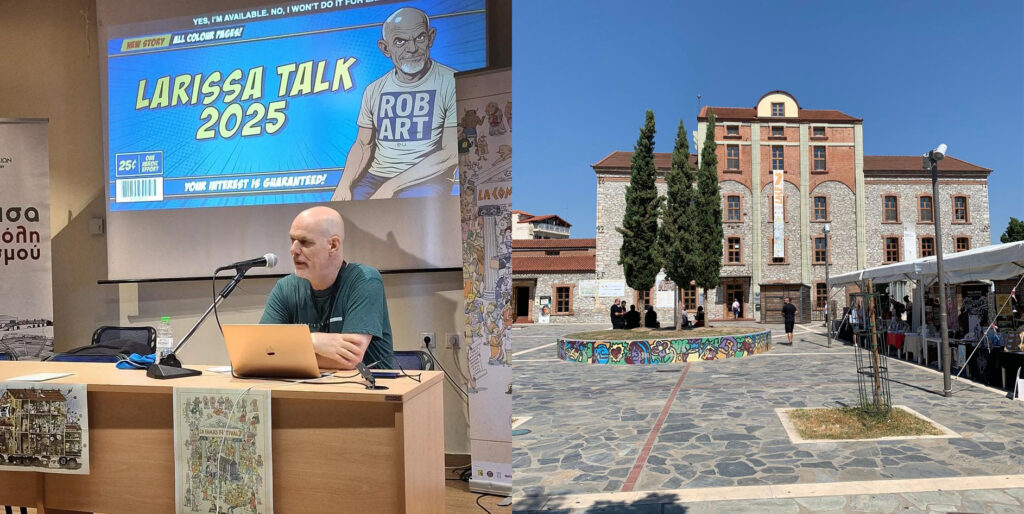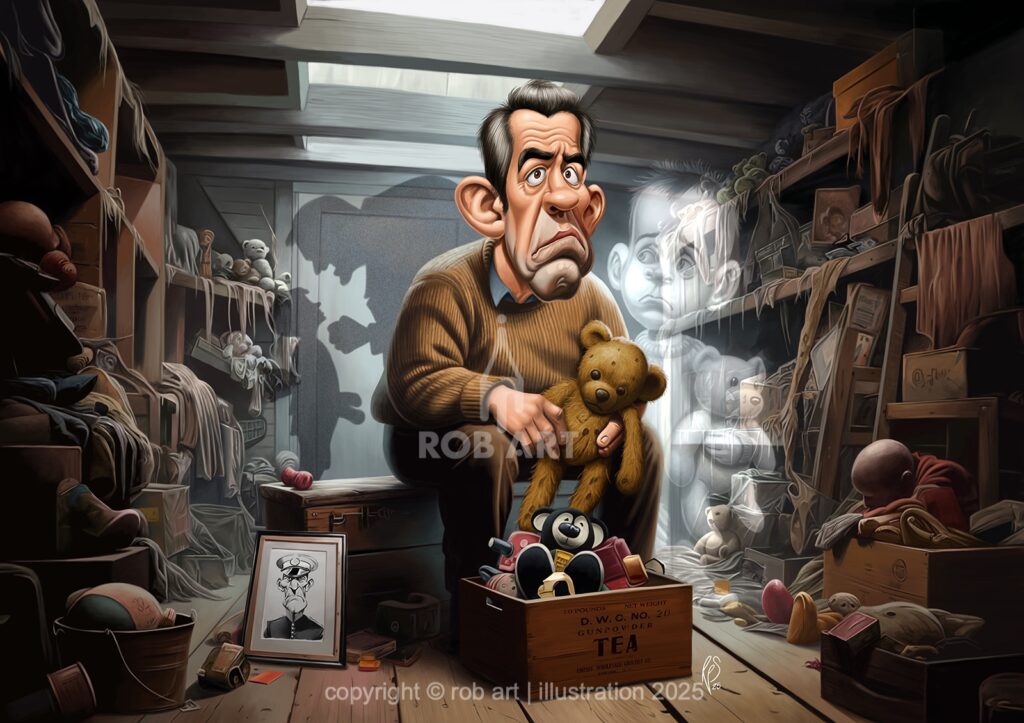
From Burnout to Breakthrough: Rediscovering Creativity
Earlier this month, I had the pleasure of being invited to Larissa’s ComicCon to give a talk about my creative journey and work. I travelled to the city on Friday, 5th September 2025, and the following afternoon—Saturday, 6th September at one o’clock—I stood in front of an audience at the Old Mill. The venue itself was a treat: a beautifully restored mill, now transformed into a vibrant community centre, full of history and atmosphere that added a special character to the event.
When preparing for the talk, I found myself facing a dilemma: what theme should I choose? My usual presentations at Graphic Stories Cyprus were built around offering practical insights—informative and helpful to other creatives. But this time was different. I had never before given a talk solely about my own work, and the more I thought about it, the more it felt like the perfect opportunity to finally share my personal story—its struggles, breakthroughs, and everything in between.
Even though I chose to talk about my own work, I also wanted to make sure it offered something of value to the young artists listening. I found that connection in the path I took back into creativity through a series of competitions I entered, following several difficult months marked by a lack of work and personal tragedies. The hardest of these was the passing of my dog, who had been both a companion and the inspiration for my Animal Behaviour series. That loss deeply affected me, and it shaped the way I thought about art moving forward.
One of the biggest challenges in my creative life has always been staying consistently inspired. Whenever I hit a low point, it inevitably affects my mental state, and I do everything I can to avoid slipping too far into that space. But after losing my dog, it felt like the final weight pressing me into a deeper depression. Then, one day, I came across a social media post from a friend about entering an art competition. Something clicked inside me. It felt like the perfect opportunity to sink my teeth into a project again—something that could reignite my motivation and give me a sense of direction.
During those months of bereavement, I still kept drawing, but in a different way. I began experimenting with caricatures in a new style—one that emphasised pose and character as much as likeness. It was a departure from my long-running Celebrity Sunday series, which I had created weekly for seven years. This fresh approach felt more expressive, more personal. Around the same time, I started researching opportunities to put this work to the test and discovered 11 competitions I wanted to enter. With that goal in mind, I began sketching and designing ideas, slowly building momentum again.

Examples of these works can be seen on my portfolio page, but in essence, they amounted to 13 illustrations built around the competition themes. I knew some of them stretched beyond the typical scope of a submission, but that wasn’t the point—I wanted the challenge, the motivation, and the structure that came from working under constraints of time and subject matter. What I didn’t expect was that, almost as soon as I threw myself into these projects, commissioned work began to flood in again. Suddenly my days were filled from sunrise to sunset with competition pieces, client projects, and the demands of everyday life. After three intense months of this routine, I found myself physically drained, though creatively alive in a way I hadn’t felt in a long time.
What this period taught me is that creativity is deeply tied to emotion. Even in difficult times, good can emerge if you allow yourself to follow where those feelings lead. Some of the pieces I created during this time turned out to be among the best I’ve ever produced—work that grew directly out of grief and the loss of my dog. That realisation became an important part of my talk: the idea that even in moments of struggle, creativity can offer not just an outlet, but a path forward. I wanted to share that with others in the hope it might inspire them to see their own challenges as potential catalysts for growth.
Alongside creating new work, I also poured energy into research. I set out to gather as much information as I could on global illustration and caricature competitions, building a database that could be used not just in the moment, but as a long-term resource. I tracked when each competition was announced, the deadlines, themes, prize structures, and any other details that might be useful to an artist considering participation. By the end, I had compiled a list of 73 competitions worldwide, each with in-depth notes. This research gave me both structure and clarity, and it became another example I could share in my talk to show how preparation and planning can open new doors.
To make things easier for those interested, I’ve organised all of this research into a clear table here on my site, along with a downloadable PDF version. If anyone would like more details—whether it’s additional information about specific competitions, insights from my own experiences, or guidance on how I approached this journey—you can always reach out through the contact form on my website. My hope is that this talk, and now this post, will be useful to others and perhaps inspire some of you to dive into competitions yourselves.
Standing in the Old Mill in Larissa, sharing this journey with others, reminded me that art is never just about the work itself—it’s about the stories, the emotions, and the resilience behind it. As for me, my calendar is already filling up with events for the year ahead, and I’m excited to test my luck—and my creativity—once again.
If interested in having an art piece done you can visit my Fiverr Pro account, or like any of my caricatures or animal art, please contact me for details.
